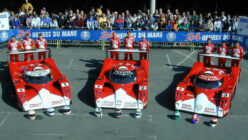Singer recently took the cover off its new, all-carbon fiber DLS at the Goodwood Festival of Speed. To say it’s stunning is a bit of an understatement. It’s not the first car the company has brought out that’s captured our attention, either.
Almost every Singer 911 since 2008 seemingly one-ups the previous model. By taking the greatest hits from other 911 cars, it crafts something amazing.
Also, with the 500hp Williams 4.0-liter flat six now at its disposal, Singer’s cars have the modern-day performance as well as the looks.
This got us thinking: what other cars deserve the Singer treatment? Also, how would we go about configuring them to create the ultimate resto-mod? The team’s come up with six as a starting point. As an added bonus, we’ve used the magic of Forza Motorsport 7 to attempt to recreate these cars as close as possible!
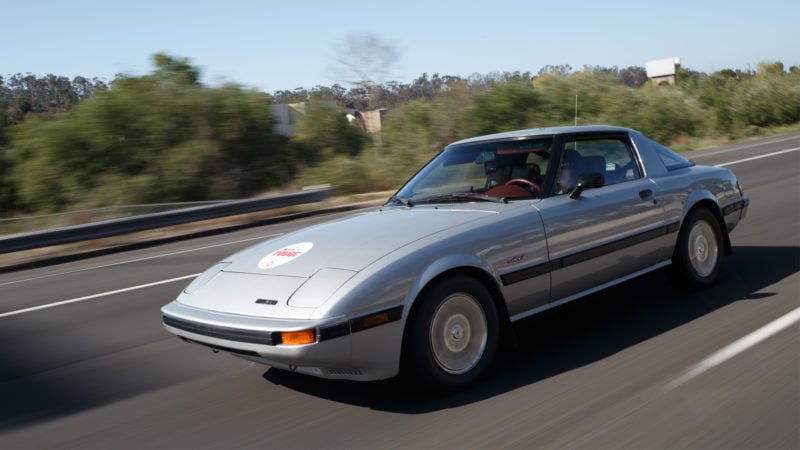
Mazda RX-7 (SA22/FB)
The Mazda RX-7 is a wonderful car, even in stock form. Its rotary engine allows for an impressive rev range and excellent performance, all while keeping it in a small package. It also feels right at home on a track or mountain road with its fine driving dynamics.
Given this, how can you make it better? Well for one, swap out the engine. No, we aren’t talking an LS-swap that some RX-7 owners gravitate to. Instead, the 1.3-liter twin-turbo 13B rotary from the FD-generation RX-7 is our choice.
This would give the first gen RX-7 a manageable 276hp and 231lbft of torque. Nothing overly crazy, but in the lightweight chassis of the FB it’d really wake the car up.
Of course, the engine would get mounted behind the front axle to keep the car as close to a perfect 50/50 weight distribution as possible.
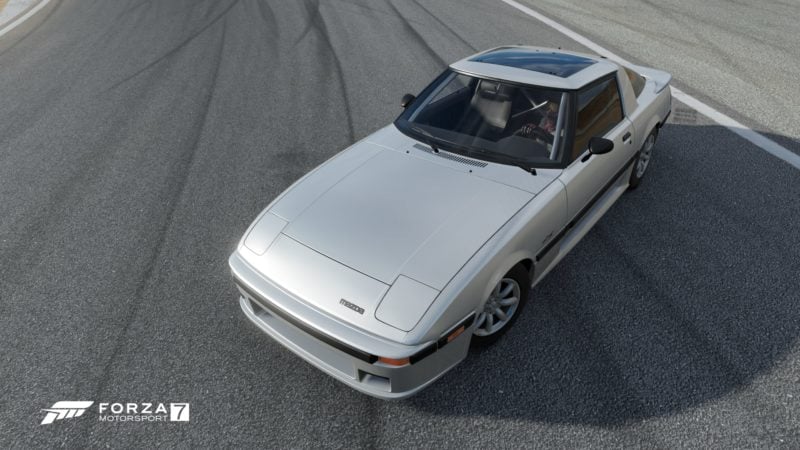
The gearbox would also come from the FD RX-7. It’s a solid five-speed unit that delivers the power to the rear wheels via a limited slip differential.
To keep the RX-7 on the ground, we’d also give it a full suspension makeover. With several JDM companies offering various solutions, it’d be fairly easy to find the perfect setup too.
For the wheels, we’d opt for something that suits the car — a set of Watanabe rims with a high offset. This would push the wheels flush with the fenders. To cap it off a set of sticky tires would also be a must.
Finally, the interior would get an overhaul while keeping with the traditional late ’70s styling. This means keeping the plaid seats along with all the brown the trim pieces offer. But we’d use modern materials to make it a better version of its former self.
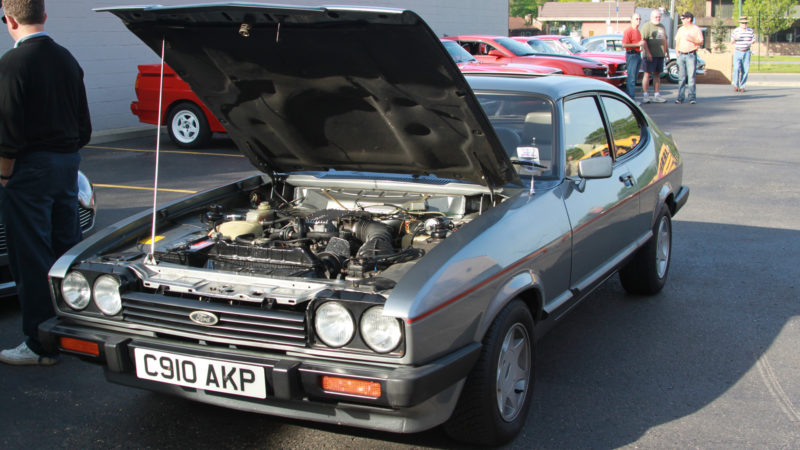
Ford Capri MkIII
Decades later, the Capri still just looks cool. The body lines give it a muscle car appearance, but with a European flair. It’s also a fairly competent starting platform as well.
Probably the most difficult bit is trying to figure out the engine. With a wide range of standard engines, picking something out seems easy. However, there’s also several modern day Ford engine that could work as well.
Ultimately we’d stick with tradition and use a Cologne V6. But to increase the power output, we’d look to Turbo Technics to work its magic. This means a full twin-turbo setup making around 300hp.

With the snails underhood, it’d be tempting to take styling inspiration from the Zakspeed Capri. To keep it streetable though, it couldn’t be nearly as extreme looking. So perhaps we’d limit body mods to a smaller front lip and over fenders to make it a bit more muscular. Also, a set of Hella driving lights on the bumper is an absolute must.
Sticking with the Zakspeed, we’d also carry over a similar style of mesh wheels. The BBS RS wheels are often the go-to when this look is required, so we see no reason to switch it up. With a gold center and a polished lip, they’d keep the Capri looking classic and sporty.
The interior on the Capri is already pretty good for an older car. But instead of faux wood grain, we’d go for the real thing. To complement it rich, black leather would cover pretty much everything else making it feel just like a modern-day sports coupe.
The final touch would come via the steering wheel. Something that emulates the RS wheel would do nicely, but with a chrome centerpiece and wrapped in matching black leather.

Alfa Romeo Montreal
The Montreal has the looks down, but when it comes to performance it’s lacking. For its day, the 197hp 2.6-liter V8 wasn’t bad. However, today it’s fairly anemic, with most every hot hatch out there boasting more power.
To solve this, we’d skip over the crop of Alfa engines and instead look directly to Ferrari.
While Ferrari does have a bunch of great modern engines in the stable, we’d look a little further back. Not too far back though, since we’d still want reliability. This means going for the 3.6-liter Tipo V8 from the 360 Modena.
With 395hp and 275lbft of torque, it’d propel the Montreal’s 2,800lb weight to 60mph in no time. The heavier 360 already does it in 4.6 seconds so a swapped Montreal could easily hit the low 4s.
Not wanting to ruin the driving characteristics of the Alfa, we’d also keep the six-speed manual from the 360.

The exterior would need very little in the way of work. Shaving down the chrome belt trim piece and the side indicator would help. However, keeping the iconic slashes in the C-pillar is a must.
The Montreal could also use a bit of lowering with a set of wheels that widen the track a bit.
This does meaning swapping out the classic Alfa rims with something a bit more modern. But fear not, we’d still stick to some sort of retro telephone dial design, only with just a little more deep dish.
Like the Capri, the interior of the Montreal is pretty good, but there are a few elements that look dated. The shifter is chief among these since it looks like a bag casually draped over the gear stick. Swapping that over to an H-gate shifter would give it a very Italian look.
For the seats, we’d go for something simple, but still leather. A basket weave would be the right level of retro. Also, the dash and center console would get matching material.
One thing we would keep is the switch panel that goes across the center stack. However, to modernize it a bit, the plastic switches would get switched to metal. This would bring the Montreal to the modern day but still keeping a recognizable element of the interior.

Honda CRX (First Generation 1983-87)
The idea of a front wheel drive sports compact is nothing new, nor is tuning a CRX. So why did we pick this? For starters, it’s a great platform to lay the foundation for an amazing car on. Also, it comes with a massive range of parts to mix and match from various tuners.
To kick off the CRX build, we’d first do an engine swap. Instead of going for something new like the 306hp I4 from the newest Civic Type R, we’d stick to more a classic engine: the first generation B16A good for 160hp in stock form.
This would still leave plenty of room under the hood, and also give us some more options with which to boost the power.
We think things like individual throttle bodies with velocity stacks would fit nicely. Also custom exhaust, header, and all the other bolt-ons a tuner would look to. But instead of just slapping it together, we’d want it to look like a work of art under the bonnet which means a ton of attention to the details.

With the engine sorted, we’d then move on to the exterior. In stock form, the first gen CRX looks very much like an economy car. To fix this, we’d look to make modifications inspired by aero kits from Mugen at the time. This would give it a period correct look without looking strange.
Unlike the ’80s version though we’d shave most of the exterior. This would give the car clean lines and take away a little bit of the retro look without going overboard.
To top off the exterior a coating of Championship White paint would cover the car. To accent it a set of gold SSR Formula Mesh wheels.
The interior on a stock CRX is a bit bleak so some time would need to be spent there bringing it up to snuff. Kameari makes several great options that combine modern comforts with a vintage look. A nice seat of black leather seats would do the just nicely.
The dash would need an overhaul as well. We’d opt for the second generation dash though and just update the gauges.
Finally, to fit the race car like theme of the CRX, we’d also install a functional roll cage in classic Honda Red.
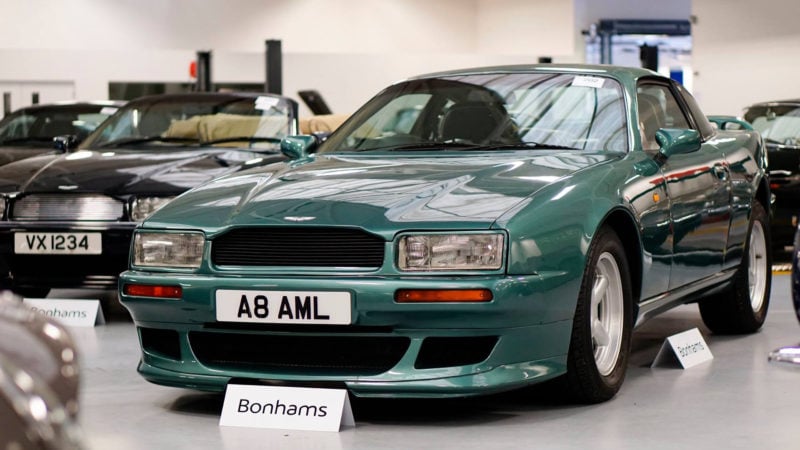
Aston Martin Vantage/Virage
To resto-mod the Vantage (also called the Virage), we’d take a bit of a different approach than the other four cars.
For starters, the engine in the Vantage is already pretty incredible. In the V600 model, the 5.3-liter V8 with a pair of superchargers put out a whopping 600hp and 600lbft of torque. Power isn’t an issue.
The biggest problem for the Vantage was its dreadful suspension. To fix this, we’d essentially rework the entire thing giving it a set of fully adjustable coilovers. From there we’d also give it some better rubber and spend most of our time dialing it in on the track.

For the exterior, we’d look across the range of various Vantage models. Primarily we’d look to the Le Mans trim for the grill and hood and the Virage for the front bumper, air dam, and mirrors. This would give it some racing characteristics while still maintaining a GT feel.
The wheels, brakes, and other bits to make them work would come from the new Vantage.
For the interior, we’d remove the Ford parts-bin look. That would mean updating it with the steering wheel and seats, also from the new Vantage. We’d also ditch the burl wood on the dash in favor or either brushed aluminum or carbon fiber.
Finally for the paint, what’s an Aston Martin without a shade of British Racing Green? However, to give it a bit of an accent we’d swap things like the hood vents, door handles, and fuel filler cap with carbon fiber parts.
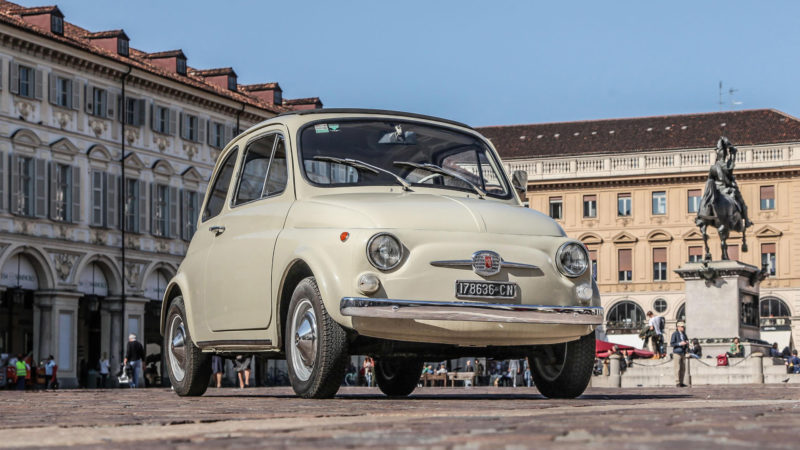
FIAT 500
The FIAT 500 is a delightful little scamp of a car. It’s also arguably one of the best city cars ever devised. Due to this it’s neither fast nor handles particularly well.
To rectify this, we’d look to the new FIAT 500 that came out in 2007.
First, we’d swap the 500cc 13hp two-cylinder engine with its modern cousin, the TwinAir — specifically the TwinAir Turbo 105. This little 900cc inline two puts out a respectable 104hp — more than enough for the little FIAT. All this would then get connected to the five-speed manual from the new 500 as well.
To help the handling we’d move the engine from the rear of the car to the front. This also means switching the 500 from RWD to FWD.
Now we know what you’re thinking, this is sacrilegious. But this would appeal more to the modern city car buyer and with a properly setup suspension, handling would still be ace. To further improve on the handling, we’d also offer an LSD from Quaife.
For the wheels and tires, we’d keep it as classic looking as we could. A set of smoothie rims would fit the bill perfectly and for the tires something with a white wall. All this together would then encircle a full brake disc conversion for the car.

To really give the 500 a modern city car feel, we’d focus much of our attention on the interior. We’d keep the classic looking seats and offer a wide variety of funky materials from plaid to unique leather options. To make sure occupants were safe, we’d also include seat belts – something missing from the original car.
The gauge cluster would get swapped over to a touchscreen digital unit with a retro-looking user interface. This would allow us to put in things like SatNav, fuel economy figures, and a boost gauge.
In addition to the gadgets in the cluster, we’d also add WiFi connectivity in the car. This would all you to access various apps on the cluster when the car was stationary. Everything from Spotify to Twitter would easily be at the drivers fingertips. However, as soon as the car sensed movement, interaction with these features would be disabled for safety.
The steering wheel would stay relatively the same. But instead of the metal wheel, we’d use a woodgrain one that complements whatever the customer chose for their interior color scheme and materials.
Finally, to top it all off, we’d offer an assortment of retro colors for our 500. However, virtually anything would be possible, including various vinyl designs as accents.
These are just some of the cars we’d like to give the Singer treatment to. By keeping the overall look, but increasing the performance would give them all a new lease on life.
Have an idea of your own or a better way to improve one of these five cars? Then head over to the forums and let us know! We always like to see who sort of dream builds gearheads like.
See more articles on GTPlanet Lists.




